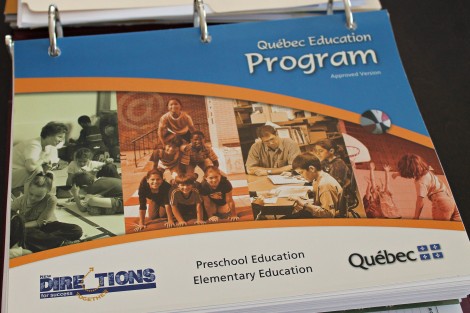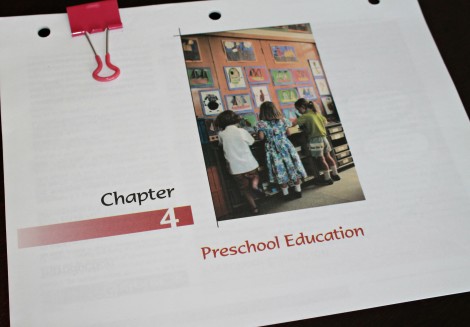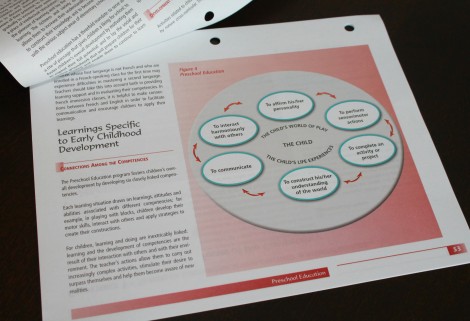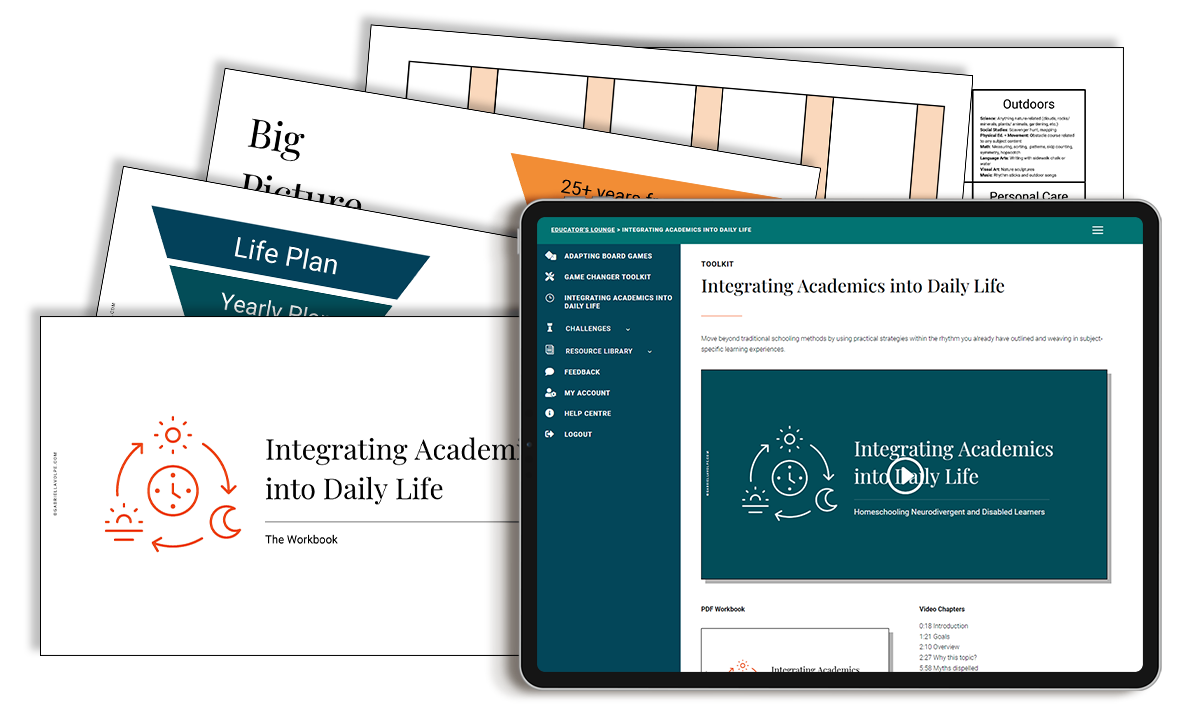Now, you’re ready to shop for a curriculum.
What if I tell you you don’t need to?
There is a misconception among first-time homeschoolers that you must shop for a curriculum. The truth is, the curriculum objectives have already been set out for you by your province or state—and they’re free.
The core standards that your province/state produces and publishes are called the curriculum or educational program (depending on where you live). Public schools are required to follow them. Depending on homeschool regulations in your province/state, as a homeschooler, you might choose to use those objectives as goals.
The fun units and activities you find and place on your wish list for purchase are what we refer to as resources. They are resources that help you meet the curriculum/educational program requirements.

This is a copy of the Quebec Education Program. It’s available online (see resources below) as are any of the curricula/programs. Note that Quebec also published a program for students with profound intellectual impairments (link also below). It’s so worth a look if you are teaching a disabled child (even if not in Quebec, even if the child’s intellectual impairment is not profound).
Why it’s important to distinguish between curriculum/program and learning resources:
1- The provincial/state curriculum is what you might follow if you wish to have a basic framework in which to gauge the educational choices for your child. You have the liberty to choose how to teach the standards/competencies/curriculum objectives. As a result, you are free to use the educational style (part 3) and the resources you wish.
2- If you are unsure of which resources to purchase, you are also free not to purchase/follow any at all! All you’d need to do is use the standards as a guide, and create your own lessons and activities.
What I recommend:
From a teacher’s perspective, I’m not a big fan of purchasing full-blown resources that take you from A-Z only because they strip away the freedom I like to have as an educator. I personally enjoy taking bits and pieces from here and there and putting together lessons and units that take on a life of their own.
However, if you are new to homeschooling, have many children to plan for, or just need a starting point, having a complete step-by-step resource might be helpful and reassuring. There are many brilliantly crafted resources for homeschooling that can be used modified to meet your child’s needs.
Locate a few resources that come highly recommended within the educational style you selected (part 3). Sometimes, they have free sample chapters on their website that you can download. Look through them and see if these match how you want your days to run (refer to your homeschool philosophy in part 1). Select the one you not only can afford but also the one that you know you can follow for a block of time. Then, test it.
It’s ok not to commit to anything for the duration of your child’s schooling. That’s the beauty of homeschooling. You can change from year to year or even month to month.

So as not to be overwhelmed by the entire volume of our provincial educational program, I pull out the section I need this year.
Where to locate your province/state’s curriculum/program:
Luckily, these days, you can find everything you need online. Because it would be impossible for me to post each of the links for all of the countries here, I urge you to run a Google search using any of these keywords (find the one that most applies to your situation):
- [your province or state or country] common core standards
- [your province or state or country] education program
- [your province or state or country] curriculum
- [your province or state or country] scope and sequence
Once you’re on the main site, you can search by grade level and then by subject. Print the pages and charts that are relevant to your child’s level, even if your child cannot meet the criteria at the moment. For the time being, use the information as a compass. You can then adapt/modify the expectations later. What’s important is having a starting point—and you have it all in one place—for free.

These are standards (or competencies, as they are called in Quebec) for the Preschool program. At a glance, I can see how I’ll be able to adapt my son’s learning to meet some of these standards/competencies this year.
What questions arise for you in terms of curriculum/program and resources? I would be happy to support you as you navigate the curriculum and resources for your child.
Schedule a consultation with me here.
Resources:
I’ve listed some examples of both Canadian and US-based curriculum/programs so you know what to look for within your province or state. Repeat for anywhere you are located in the world!
- Ontario Elementary Curriculum (Ontario, Canada)
- Quebec Education Program (Quebec, Canada)
- Quebec Education Program for Students with a Profound Intellectual Impairment (Quebec, Canada)
- Competency-based Approach to Social Participation: CASP – I Education Program for Students Aged 6 – 15 (Quebec, Canada)
- Scales of Competency Levels – CASP – I Education Program (Quebec, Canada)
- Common Core State Standards (USA – not all states have adopted these standards, but they are common throughout most of the USA, which makes it different from Canada since each province has a different curriculum outlined)

Integrating Academics into Daily Life Workshop
Discover how to integrate academics into daily life. For homeschoolers of neurodivergent and disabled learners.

0 Comments